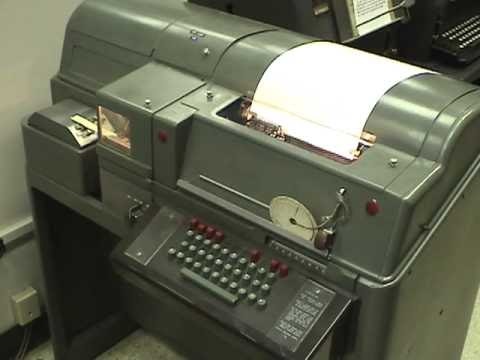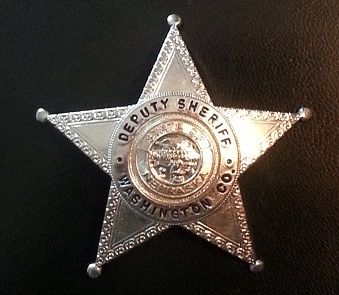

The
New Job: Washington
County Sheriff's Office, Winter 1978 I’d been attending Dana College at Blair, Nebraska majoring in Speech / Radio Broadcasting. At that point in time, my career aspirations were to work at a radio station, perhaps as a news reporter. Dana College was recommended to me by some friends I knew who were attending there. It had a great Broadcasting Program and a good college radio station, but after completing the first semester, I came to the realization that I made a big mistake by enrolling in an institution that was a very expensive, private, Lutheran College. The Broadcasting Department was good, but everything else was tailored to educating me to be a teacher, or a member of the clergy. Neither were occupations I wanted to be in. The previous year, while seeking work in the broadcasting industry, I also applied for every job I could find that had anything to do with a radio and a microphone. Lo and behold, I was called by the Sheriff’s Office at Blair, inviting me to come in for an interview. I brought some good experience to the table with me. I had previous experience as a mobile telephone operator, so I was familiar with land mobile radios and their interfaces. I possessed an FCC Third Class Radio-Telephone Operators License, which was needed in order to work at a broadcast radio station. While not necessary to be a dispatcher, it showed that I had a more than average depth of knowledge in the area of radio communications. Finally, after working the past several years as a news reporter, I spent a lot of time listening to a radio scanner of the public safety radio service. I fluently understood the jargon, protocols, and the radio codes used by Nebraska Law Enforcement. I was near ready to sit down at the dispatch desk with only a little training. It also helped that my Dad was a local resident of the county. I later learned that all the other applicants considered lived elsewhere, outside of Washington County. I was offered the job by mid-week. My first day on the job was a day shift on a Saturday. Mike Kult was the Night Operator going off Duty, and Herb, would be sitting with me during the day shift. Mike had just taken a 911 call for an ambulance, (Rescue Call as they used to call it then,) needed at Fort Calhoun and said, “Here you go. You can dispatch your first call!” I sat down, and asked, which channel is 39.98? (The Fire and Rescue Frequency.) “Channel Three,” came the unison reply from Mike and Herb. I switched the radio to Channel Three, selected the Plectron Tones for Ft Calhoun Fire, then keyed the mike to announce, “Fort Calhoun Rescue Call, Fort Calhoun Rescue Call. Five-Six-One North 7th Street, Five Hundred Sixty One North 7th Street, Female Patient, Difficulty Breathing. Fort Calhoun Rescue Call. Zero-Seven-Zero-Eight. KDD339.” Mike says, “Oooooooh! Mr. Ice! Cool as a cucumber! Where did you learn that?” I told Mike and Herb a little about my background, and we chatted a bit. Before long Mike said, “I think you’ve got a good handle on it. Do everything else like you did on that last call, and you’ll do just fine!” As the part time “new guy” I was assigned to work the days off for the three full time guys. The Chief Dispatcher was Brent Roland. He was my age, and had been doing this for quite awhile. I shadowed Brent, Mike, and Herb for the next week or so. I pretty much had the radio down ok, so the majority of my “On-The-Job Training” was on the use of the Teletype. Back then, it was the old Model 28 Western Union Teletype. If you ever remembered back in the 60’s and 70’s, some of the AM Radio News Personalities was announce, “Time for News!” and in the background you would hear “chug- chug- chug- chug- chug- chug” going on in the background. That was likely a Model 28 Teletype Receiver where they would get their news feeds from AP and UPI. Our Teletype Machine at the Sheriff's Office had a transmitter or Ticker-Tape Reader built on as well.
When you needed to send a message or a query to the NCIC / NCIS Computer, you typed out the message in a specified format onto a Ticker Tape. You then inserted your tape into the Tape Reader, pressed a switch for Request to Send, and when our turn came around, the machine would come to life, reading the message from the tape and typing it out on the roll of paper. “chug- chug- chug- chug- chug- chug!” Sometimes when you hit the Request to Send switch, it would take right off, other times it might take five, ten minutes or more! When receiving a message, the machine would come to life all on its own. Brent would be dancing to the rhythm, “chug- chug- chug- chug- chug- chug!” This was all pretty cutting edge at the time, although we did learn that the new Model 35 had been deployed at a few agencies, and that the State Patrol was trying out the new Model 40 also known as the Dataspeed 40. It was a teletype with a video screen. You prepared your message on the screen, hit send, and away it would go. No more ticker tape! As far as receiving messages went, they appeared on the screen, and you printed only what you needed! I wouldn’t get my hands on one of these until 1981… Soon, after they decided to keep me, I was given a badge and some shoulder patches and told where I could go in Omaha to purchase my uniform shirts. It wasn’t required, but I purchased a regulation name tag, and collar brass. My serial number, or badge number was 92914.
Nebraska has a system where during the 1920’s, each county was issued a number which at the time, was based on the population of that county. Douglas County where Omaha was located was Number 1. Lancaster County where Lincoln was the county seat was Number 2. Washington County was Number 29. Most people will recognize this system used on Nebraska License plates, where with the exception of some of the more populated counties, the license plate number would contain the county number, followed by the unique number assigned. A license plate for a Washington County Resident might appear as 29-C184. The plates I had at the time were from Douglas County, and were 1-DT32. This numbering system was also applied to many other functions in Nebraska. For law enforcement, the system was applied to our badge numbers. The prefix number 4 generally designated a municipal police officer. The prefix 9, designated Sheriff. The next two numbers designated the county; the following numbers identified the individual officer. So the Sheriff of Washington County was 929. His Deputies would be 9291, 9292, and so forth. I was 92914. Over the upcoming years, including 92914, I had been issued numbers 40912, 40841, 4291, and 40154. In many cases, the badge number was your radio call sign, as was the case for me with the exception of 40154. I think the only time I ever used it on the radio, was when traveling in Western Nebraska, and I was using one of the state wide channels. When I received my new uniform shirts, I pinned the badge, name tag, and collar brass on; then put the shirt on. The first thing I noticed was how heavy the badge felt on my shirt. Over the years, I observed the weight on the badge from other perspectives, but that’s another story. I was pretty self-conscious wearing the uniform at first until my sister told me it was pretty cool! I also felt later that the uniform provided a sense camaraderie in that you were now part of an elite group. This
was the beginning of a proud career! |
Purple Sage / Schulze Web Sites
All Rights Reserved

